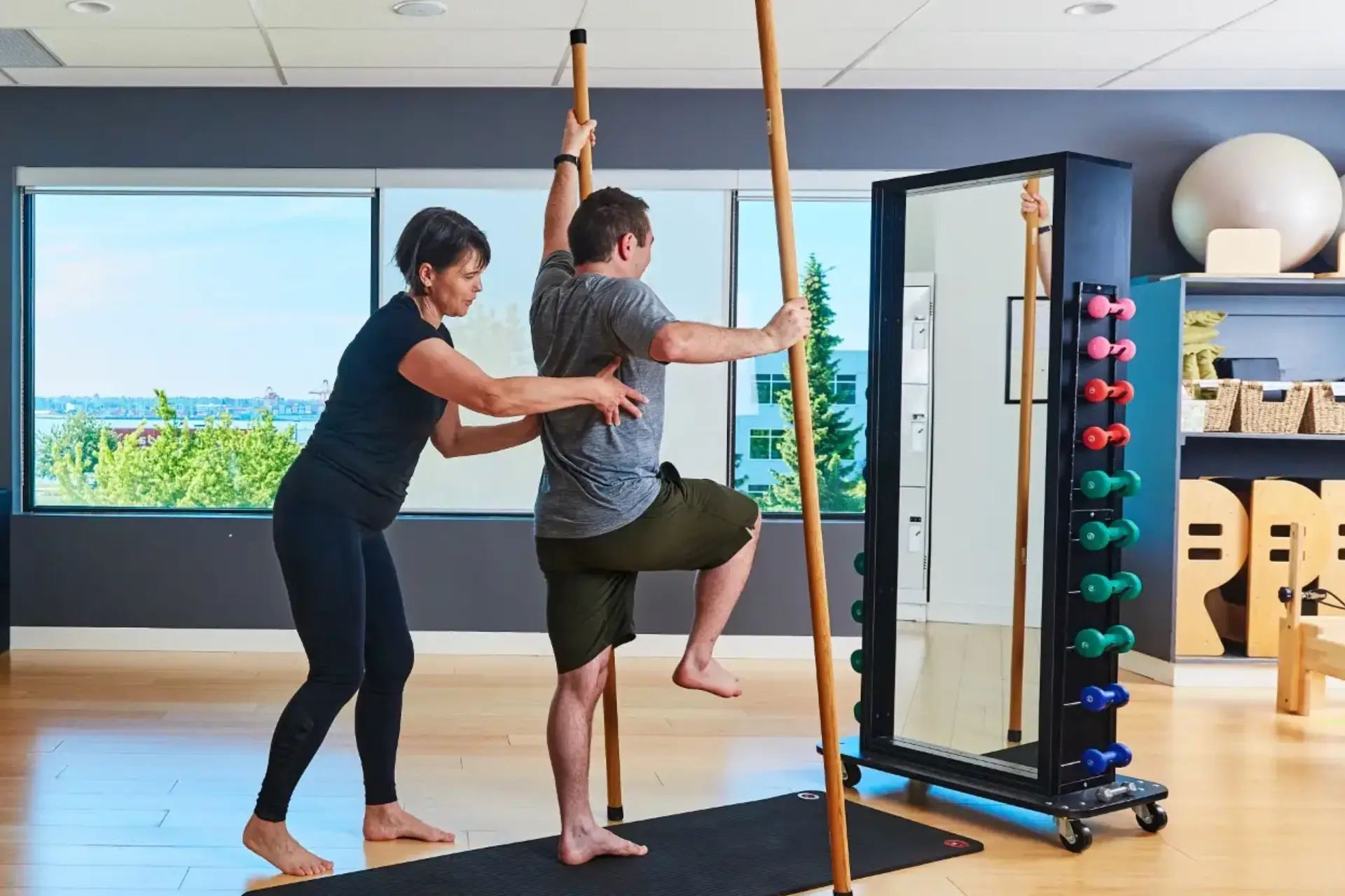
Scoliosis is a condition that affects the curvature of the spine, causing it to bend sideways.
This curvature can develop during childhood or adolescence and may lead to various health issues if left untreated.
Fortunately, physiotherapy offers effective techniques and tools to manage scoliosis, enabling individuals to live fulfilling lives with reduced discomfort. At Trimetrics Physiotherapy in North Vancouver, we’re proud to offer scoliosis physiotherapy services – so we put together this blog post to help you understand scoliosis and how physiotherapy can help mitigate its symptoms.
Understanding Scoliosis
Scoliosis is characterized by an abnormal lateral curvature of the spine, resulting in an “S” or “C” shape.
This condition can develop due to various factors, including genetics, poor posture, musculoskeletal imbalances, or neuromuscular conditions.
Scoliosis can cause uneven shoulders, hips, and ribcage, resulting in pain, stiffness, and reduced mobility.
The Impact of Scoliosis on Your Health
The impact of scoliosis on an individual’s health extends beyond physical discomfort. It can affect self-esteem, body image, and overall quality of life. The condition may also lead to respiratory difficulties, digestive issues, and an increased risk of spinal degeneration later in life. Therefore, seeking appropriate treatment is crucial for managing scoliosis effectively.
Specific Scoliosis Physiotherapy Techniques and Exercises
Physiotherapy plays a crucial role in managing scoliosis by improving posture, strengthening muscles, and reducing pain. Here are some specific techniques and exercises commonly used by physiotherapists to address scoliosis:
- Schroth Method: The Schroth Method is a specialized exercise program designed for scoliosis patients and a scientifically proven method for successfully treating scoliosis. It focuses on three-dimensional correction of the spine by using breathing techniques, postural awareness, and specific exercises. These exercises aim to elongate the trunk, stabilize the spine, and strengthen the muscles surrounding the curve.
- Core Strengthening Exercises: Strengthening the core muscles can help support the spine and improve stability. Physiotherapists often prescribe exercises like planks, bridges, and abdominal crunches to target the deep abdominal muscles and the muscles in the back. These exercises can help improve posture and reduce strain on the spine.
- Stretching Exercises: Stretching exercises are essential to maintain flexibility and relieve muscle tension associated with scoliosis. Physiotherapists may recommend stretching exercises for the chest, hamstrings, hip flexors, and other tight muscles to promote better alignment and range of motion.
- Postural Correction: Correcting posture is a fundamental aspect of scoliosis physiotherapy. Physiotherapists guide patients in adopting proper sitting, standing, and walking techniques to minimize the imbalances caused by the spinal curvature. They may use various techniques, such as mirror feedback or tactile cues, to help patients achieve correct alignment.
- IMS: Intramuscular stimulation involves using thin needles to stimulate muscles and encourage healing. Targeting muscles around your affected vertebrae can reduce tension and pain.
- Spinal Mobilization: Spinal mobilization techniques involve the gentle movement of the spine to improve mobility and reduce pain. Physiotherapists may use manual therapy techniques like joint mobilizations, soft tissue mobilization, or myofascial release to address areas of stiffness or restricted movement.
- Taping and Bracing: In some cases, physiotherapists may recommend taping or bracing techniques to help support the spine and correct posture. These techniques can provide external assistance in maintaining proper alignment and reducing the progression of the curve. The specific type of taping or bracing used will depend on the individual’s scoliosis severity and other factors.
- Neuromuscular Re-education: Physiotherapists often focus on neuromuscular re-education to improve motor control and movement patterns. This involves exercises that train the body to move in a more balanced and coordinated manner, avoiding compensatory movements that can exacerbate scoliosis.
It’s important to note that these techniques and exercises should be performed under the guidance of a qualified physiotherapist who specializes in scoliosis. Each individual’s treatment plan may vary based on the severity of their scoliosis and other factors. A personalized approach is crucial to address the specific needs of each patient.
Remember, consistency and commitment to the prescribed exercises are key to achieving optimal results. By working closely with a scoliosis physiotherapist at Trimetrics and following their recommendations, people with scoliosis can effectively manage their condition and improve their quality of life.
Scoliosis Physiotherapy in North Vancouver
Scoliosis may present challenges, but with the help of physiotherapy, individuals can effectively manage their condition, reducing pain, improving posture, and enhancing overall well-being.
To learn more about scoliosis physiotherapy and how it can improve your quality of life, visit Trimetrics Physiotherapy in North Vancouver.
Schedule a consultation with their specialized team to receive personalized guidance and support in managing your scoliosis effectively. Don’t let scoliosis hold you back from living a fulfilling life! Reach out to Trimetrics Physiotherapy today.

